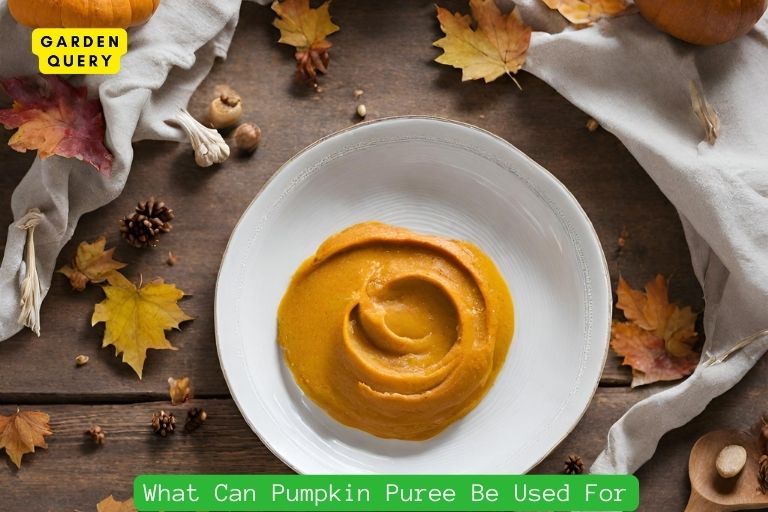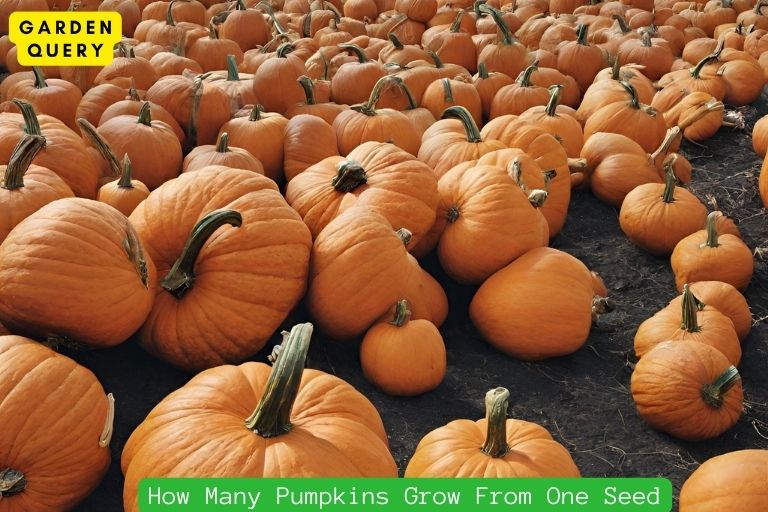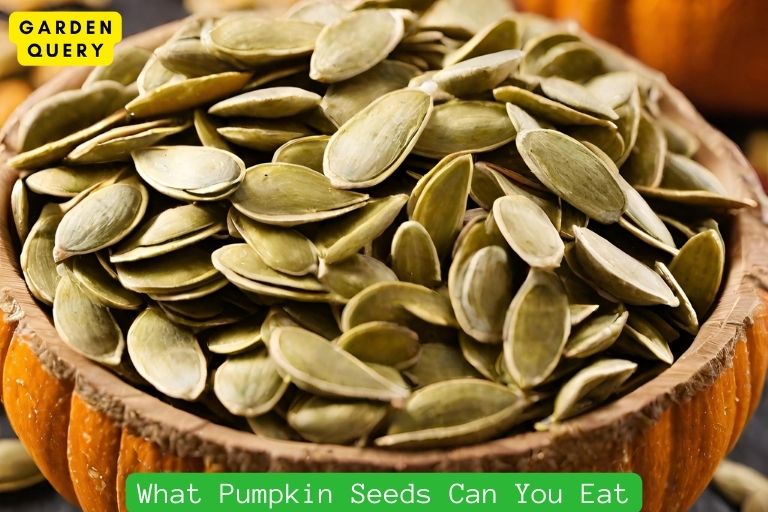Are Pumpkins A Fruit Or Vegetable?
Botanically speaking, pumpkins are fruits, specifically berries, as they develop from the ovary of a flower and contain seeds.
In the culinary world, they are often treated as vegetables due to their savory applications.
- Botanical Classification: Pumpkins belong to the gourd family, Cucurbitaceae, and are scientifically classified as fruits. They develop from the fertilized ovary of a flower and contain seeds, meeting the botanical criteria for fruits. In this context, pumpkins are considered berries due to their fleshy pericarp and enclosed seeds.
- Culinary Perspective: In everyday culinary terms, pumpkins are often labeled as vegetables. This is because they are commonly used in savory dishes like soups, stews, and casseroles. The culinary classification is more based on taste and culinary use rather than the botanical definition.
- Versatility of Use: The dual nature of pumpkins as both fruits and vegetables highlights their versatility. While they can be used in savory dishes, pumpkins are equally at home in sweet applications like pies, muffins, and cakes, showcasing their diverse culinary potential.
- Cultural and Culinary Significance: Pumpkins hold cultural significance worldwide, particularly during fall festivals and holidays. Their use in both sweet and savory dishes makes them a staple in diverse cuisines, contributing to a wide array of culinary traditions.
- Nutritional Benefits: Whether classified as a fruit or vegetable, pumpkins offer nutritional benefits. They are rich in vitamins, minerals, and antioxidants. Their vibrant orange color is indicative of high beta-carotene content, promoting eye health and overall well-being.
Key Takeaway
Pumpkins: A Fruit or Vegetable?
What Makes a Fruit a Fruit and a Vegetable a Vegetable?
To understand whether pumpkins are a fruit or a vegetable, let's start by clarifying what defines each category.
In botanical terms, fruits are the mature ovaries of flowering plants that contain seeds.
They are typically developed from the flower’s fertilized ovary and can be consumed fresh or used to produce seeds for reproduction.
Vegetables include the edible parts of plants such as leaves, stems, roots, and even some flowers.

The Debate Around Pumpkins: Fruit or Vegetable?
As you might have guessed, pumpkins fall into the fruit category based on the botanical definition.
They are technically a fruit because they develop from the fertilized ovary of a pumpkin flower, containing seeds and having a characteristic fleshy structure.
In everyday culinary terms and common language, they are often referred to as vegetables.
The confusion arises because people typically associate vegetables with savory dishes and fruits with sweet treats.
Pumpkins are commonly used in cooking, especially in savory dishes like soups and stews, making them seem more like a vegetable in culinary terms.
Pumpkins often lack the sweetness associated with fruits, further blurring the line between their classification.
Whether pumpkins are considered a fruit or a vegetable depends on the context. From a botanical perspective, they are fruits.
When it comes to culinary usage and popular perception, many classify them as vegetables.
This discrepancy highlights how the botanical definition and everyday language may not always align when it comes to categorizing certain foods.
While pumpkins are scientifically classified as fruits due to their botanical characteristics, they are often referred to as vegetables in culinary contexts.
Read More: Pumpkin
Scientific Classification and Characteristics
Understanding the botanical definition of fruits
When it comes to classifying fruits and vegetables, things can get a little confusing. In botanical terms, fruits are defined as the mature ovaries of a flowering plant.
Simply put, a fruit is formed from the ovary of a flower and contains seeds. On the other hand, vegetables are the edible parts of a plant, such as leaves, stems, and roots.
Examining the characteristics of pumpkins as per botanical classification
Now, let's take a look at pumpkins. Pumpkins belong to the Cucurbitaceae family, which includes various other members like cucumbers, melons, and gourds.
According to botanists, pumpkins are indeed classified as fruits. They develop from the flower of the pumpkin plant and contain seeds.
In fact, if you were to cut open a pumpkin, you would find numerous seeds embedded in its flesh.
In culinary terms and common usage, pumpkins are often referred to as vegetables. This confusion arises because we tend to categorize foods based on taste, preparation, and usage rather than their botanical classification.
Pumpkins are commonly used in savory dishes like soups and stews, which aligns more with our perception of vegetables.
Interestingly, the debate over whether pumpkins are fruits or vegetables also existed in the United States, and it even reached the Supreme Court in 1893.
The court ruled that pumpkins, along with tomatoes, are legally classified as vegetables for taxation purposes, despite their botanical definition as fruits.
From a botanical standpoint, pumpkins are classified as fruits due to their origin from the flower and their ability to produce seeds.
In everyday language and culinary culture, they are often referred to as vegetables.
So, whether you consider pumpkins as fruits or vegetables really depends on the context and perspective you are approaching it from.
It’s fascinating how the definition and perception of food can vary based on different factors, but regardless of whether pumpkins are fruits or vegetables, one thing is for sure – they are delicious and versatile ingredients that can be used in a variety of sweet and savory dishes!
Read More: How Long Does It Take For Pumpkins To Grow?
Culinary and Culinary Use
Are pumpkins a fruit or a vegetable? It’s a question that has sparked many debates among food enthusiasts and botanists.
Let's venture into the culinary world to uncover the truth about this orange delight.
The culinary perspective: Fruits vs. vegetables
From a botanical standpoint, pumpkins are fruits. In the botanical world, fruits are defined as structures that develop from the ovary of a flowering plant and contain seeds.
Pumpkins meet this definition perfectly, as they grow from the flower of the pumpkin plant and contain numerous seeds.
When it comes to culinary classification, the lines between fruits and vegetables can blur.
In the culinary world, fruits are often associated with sweetness and used in desserts, while vegetables are typically used in savory dishes.
By this definition, pumpkins are often considered vegetables due to their versatile use in savory recipes like soups, curries, and stews.
How pumpkins are used in cooking and baking
Pumpkins are incredibly versatile in the kitchen, and their sweet and nutty flavor can enhance both sweet and savory dishes.
From the classic pumpkin pie to creamy pumpkin soup, here are some popular culinary uses for pumpkins:
Pumpkin Pie: Perhaps the most iconic pumpkin dish, pumpkin pie showcases the sweetness of this fruit. Mixed with a blend of spices, creamy pumpkin puree is baked into a flaky crust, resulting in a delicious dessert enjoyed during fall and winter holidays.
Pumpkin Soup: Creamy and comforting, pumpkin soup is a staple during the cooler months. The natural sweetness of roasted pumpkin is enhanced with savory spices and herbs, creating a delightful bowl of warmth.
Pumpkin Risotto: Pumpkins can be used in savory dishes like risotto, too. The tender flesh can be added to risotto along with aromatic ingredients like onions, garlic, and herbs, creating a creamy and flavorful dish.
Pumpkin Bread: Moist and fragrant pumpkin bread is a popular treat that can be enjoyed any time of the day.
The addition of pumpkin puree adds moisture and a subtle sweetness to the bread, making it an irresistible baked good.
Pumpkin Curry: Pumpkins are also widely used in various curry dishes. The natural sweetness and creamy texture of pumpkin complement the bold flavors of curry spices, creating a delicious and hearty meal.
While the culinary use of pumpkins leans more towards vegetables due to their versatility in savory dishes, it’s important to remember that botanically, they are fruits.
Regardless of their classification, pumpkins continue to be a beloved ingredient in both sweet and savory recipes, bringing warmth and flavor to our tables.
The debate of whether pumpkins are fruits or vegetables is a testament to the diversity and complexity of our food classification systems.
So the next time you enjoy a slice of pumpkin pie or savor a spoonful of pumpkin soup, you can appreciate the fact that pumpkins can be both a fruit and a vegetable, depending on how you look at it.
Read More: How Do Pumpkin Seeds Grow?
Nutritional Profiling
Analyzing the nutritional composition of pumpkins
When it comes to categorizing pumpkins as either a fruit or a vegetable, it's essential to delve into their nutritional profile.
Pumpkins are packed with essential vitamins and minerals that offer numerous health benefits.
They are rich in beta-carotene, a powerful antioxidant that converts into vitamin A in the body, promoting healthy vision and boosting the immune system.
Pumpkins provide a good source of vitamin C, which supports collagen production and aids in wound healing.
Pumpkins are also a great source of fiber, which helps maintain a healthy digestive system and promotes satiety.
They are low in calories and contain no cholesterol or unhealthy fats, making them an excellent addition to a balanced diet.
How pumpkin’s nutritional profile aligns with fruits and vegetables
In terms of their nutritional composition, pumpkins share many similarities with both fruits and vegetables.
Fruits are typically high in natural sugars, and although pumpkins do contain some natural sugars, they have a relatively low sugar content compared to fruits like bananas or grapes.
Vegetables, on the other hand, are typically known for their high fiber content, and pumpkins fit into this category.
The fiber in pumpkins helps regulate blood sugar levels, lower cholesterol, and support weight management.
Pumpkins contain seeds, which are a common characteristic of fruits. These seeds are an excellent source of healthy fats, protein, and essential minerals like magnesium and zinc.
Despite their unique categorization, whether a fruit or a vegetable, pumpkins offer a wide range of health benefits and are a versatile ingredient in various culinary preparations.
From pumpkin soups and pies to roasted pumpkin seeds and smoothies, there are countless creative ways to incorporate this nutritious food into your diet.
To summarize, pumpkins can be considered both a fruit and a vegetable due to their nutritional composition.
They provide essential vitamins, minerals, and fiber, making them a healthy addition to any diet.
So, whether you decide to enjoy them as part of a sweet dessert or a savory dish, pumpkins are a versatile and nutritious choice.
Read More: How Do Pumpkin Plants Grow?
Cultural and Legal Definitions
Cultural perceptions and definitions of fruits and vegetables
When it comes to identifying whether a pumpkin is a fruit or vegetable, cultural perceptions and definitions play a significant role.
In everyday language, people often classify fruits as sweet, juicy, and typically consumed raw, while vegetables are considered savory and usually cooked before eating.
Using these criteria, most people would consider a pumpkin to be a vegetable because it is commonly used in savory dishes, such as soups and stews.
From a botanical perspective, fruits are the mature ovaries of flowering plants, and vegetables encompass all other parts of the plant, including leaves, stems, and roots.
According to this scientific definition, pumpkins are classified as fruits because they develop from the flower and contain seeds.
This means that not only pumpkins but other commonly classified “vegetables” such as tomatoes and cucumbers are actually fruits as well.
The legal classification of pumpkins: Fruit or vegetable?
Legally, the classification of pumpkins varies depending on the jurisdiction and context.
In the United States, for example, the Supreme Court ruled in 1893 that pumpkins (and other similar fruits) are considered vegetables for the purpose of taxation.
The court’s decision was based on the fact that pumpkins are primarily used as a culinary ingredient and are not typically eaten as dessert fruits.
The legal classification of pumpkins is further complicated by the fact that different laws and regulations have specific definitions for fruits and vegetables depending on their intended use.
For example, in the U.S. Customs regulations, pumpkins are classified as vegetables, while the U.S. Department of Agriculture considers them fruits for the purpose of nutrition labeling.
Ultimately, regardless of the cultural or legal definitions, the categorization of pumpkins as fruits or vegetables may vary depending on the context and perspective.
While in everyday language, pumpkins are often referred to as vegetables due to their typical culinary use, from a botanical standpoint, they are fruits because they develop from flowers and contain seeds.
The question of whether pumpkins are fruits or vegetables depends on how you define the terms.
Culturally, they are commonly perceived and classified as vegetables, while botanically, they are fruits. Legally, the classification may differ depending on the jurisdiction and purpose.
The next time you enjoy a pumpkin dish, you can appreciate its dual nature as both a fruit and a vegetable.
- Best Therapists In Dallas - February 1, 2024
- Holly Willoughby Husband: Holly Willoughby’s Love Story - January 30, 2024
- Holly Willoughby Dress: 5 Style Secrets and 7 Must-Know Career Milestones - January 30, 2024





